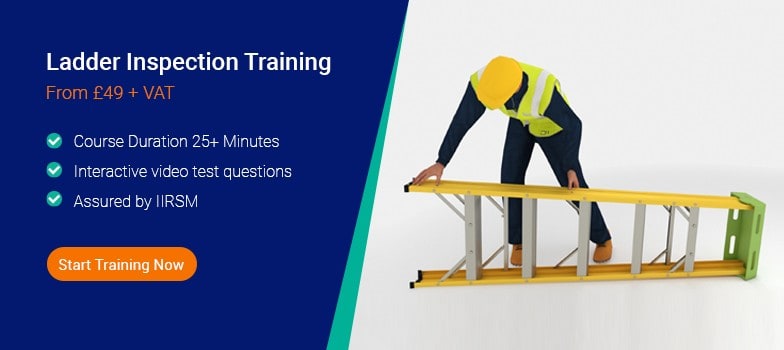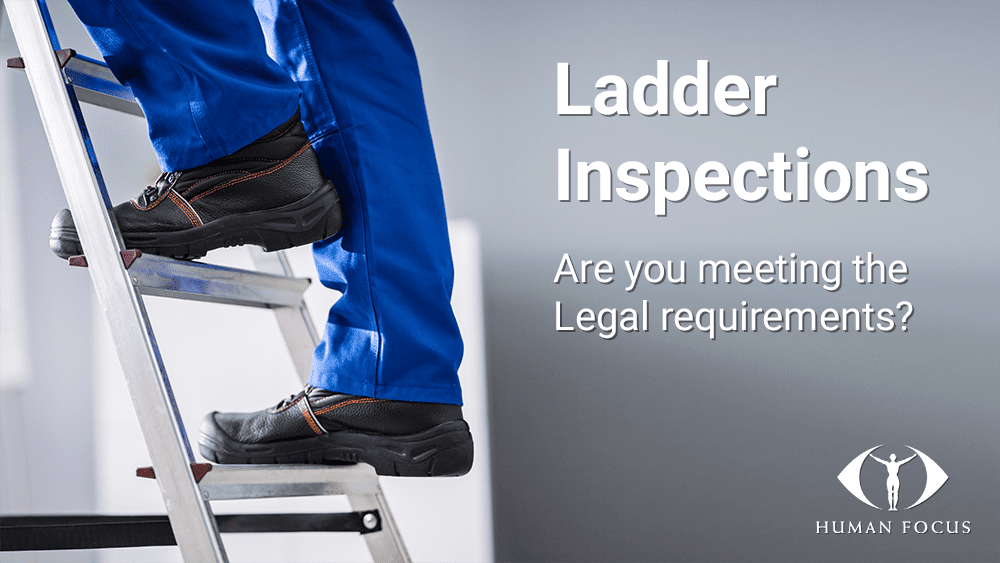Ladders should be inspected before each use and regularly as part of routine maintenance. This ensures safety and prevents accidents.
Ladders are essential tools in many homes and workplaces. Whether you use a ladder for painting, cleaning gutters, or reaching high shelves, safety is crucial. Regular inspections can help identify any damage or wear and tear. This prevents accidents and ensures the ladder remains reliable.
But how often should these inspections be done? Understanding the importance and frequency of ladder inspections can save lives and prevent injuries. In this blog post, we will explore the recommended inspection schedules and what to look for during each check. This will help you maintain a safe working environment.

Credit: brownssafetyservices.co.uk
Importance Of Ladder Inspections
Keeping ladders in top condition is critical. Regular inspections are vital for safety and compliance. Let’s delve into the importance of ladder inspections.
Preventing Accidents
Regular ladder inspections help prevent accidents. Damaged or worn-out ladders pose serious risks. By inspecting ladders frequently, you can spot issues early.
Common issues include:
- Loose rungs
- Cracked steps
- Worn-out non-slip surfaces
Fixing these problems can prevent falls and injuries. It ensures users’ safety.
Legal Requirements
Adhering to legal requirements is crucial. Many regions have specific rules for ladder inspections. These rules aim to protect workers and ensure safe working conditions.
Legal requirements may include:
| Region | Inspection Frequency | Details |
|---|---|---|
| USA | Monthly | OSHA standards |
| UK | Quarterly | HSE guidelines |
| Canada | Every use | CSA standards |
Following these guidelines is essential. It helps avoid legal penalties and ensures workplace safety.

Credit: humanfocus.co.uk
Types Of Ladders
Different types of ladders serve different purposes. Knowing the right type can help ensure safety and proper use. Regular inspection is key to maintaining ladder safety. Here, we’ll discuss two common types of ladders: step ladders and extension ladders.
Step Ladders
Step ladders are self-supporting and can be used in various settings. They are ideal for tasks that require a stable platform. Step ladders come in different sizes and materials. They can be made of aluminum, fiberglass, or wood.
Inspection frequency: Step ladders should be inspected before each use. Look for signs of wear and tear. Check for cracks, loose steps, and damaged hinges. Inspect the spreaders and ensure they lock properly.
| Material | Inspection Tips |
|---|---|
| Aluminum | Check for dents and bends. |
| Fiberglass | Look for splinters and cracks. |
| Wood | Inspect for rot and splits. |
Extension Ladders
Extension ladders are not self-supporting. They are used to reach higher places. They are adjustable in length and have two or more sections. Extension ladders are often made of aluminum or fiberglass.
Inspection frequency: Inspect extension ladders before each use. Ensure the rungs are not bent or loose. Check the locks and pulleys for proper function. Inspect the rails for any damage.
- Check the halyard rope for wear.
- Inspect the ladder feet for damage.
- Ensure the ladder is clean and free of debris.
Both step ladders and extension ladders require regular inspection. This ensures they remain safe and reliable for use.
Frequency Of Inspections
Ladder safety is crucial in both home and workplace settings. Regular inspections ensure that ladders remain safe to use. This section covers how often ladders should be inspected to maintain safety standards.
Daily Checks
Conducting daily checks is essential for ladder safety. Daily checks involve a quick visual inspection before using the ladder. Look for any obvious signs of damage or wear.
Here are some key points to check:
- Check for cracks or splits in the ladder rungs.
- Ensure all screws and bolts are tight.
- Look for any visible signs of rust or corrosion.
- Verify that the ladder’s feet are intact and slip-resistant.
Daily checks can help catch minor issues before they become major problems. Always be vigilant to ensure your ladder is safe for use.
Monthly Inspections
Monthly inspections should be more thorough than daily checks. These inspections involve a detailed examination of the ladder’s condition.
Follow these steps for a comprehensive monthly inspection:
- Inspect the ladder for structural integrity.
- Check for any bends or deformations.
- Examine the ladder’s locking mechanisms for proper functioning.
- Ensure the ladder is clean and free from contaminants.
- Review the ladder’s condition against manufacturer guidelines.
Monthly inspections are vital for identifying potential hazards that daily checks might miss. Keeping a record of these inspections can help track the ladder’s maintenance history.
Regular inspections, both daily and monthly, are key to ensuring ladder safety. By following these guidelines, you can prevent accidents and maintain a safe environment.
Inspection Checklist
To ensure ladder safety, it’s crucial to perform regular inspections. An inspection checklist helps identify potential hazards. Below are key areas to focus on during ladder inspections.
Structural Integrity
Assessing the structural integrity of a ladder is vital. Look for any cracks, bends, or deformations. These can compromise the ladder’s stability.
- Check all rungs and steps for damage.
- Inspect the side rails for cracks or bends.
- Ensure all rivets and welds are intact.
Safety Features
Inspect all safety features to ensure they function properly. This includes locks, feet, and spreader bars.
- Verify that locking mechanisms engage and hold securely.
- Ensure ladder feet are not worn out and provide good grip.
- Check that spreader bars are straight and secure.
By following this inspection checklist, you can maintain ladder safety and prevent accidents. Regular inspections are key to ensuring your ladder remains safe and reliable.
Common Issues Found
Inspecting ladders is crucial for safety. Regular inspections help identify common issues that could lead to accidents. Knowing what to look for can prevent injuries and extend the ladder’s life. Let’s explore some frequent problems found during ladder inspections.
Loose Rungs
Loose rungs are a significant safety hazard. They can cause falls and injuries. During inspection, check each rung for stability. Wiggle each rung to see if it moves. A secure rung should not shift or feel loose. If you find a loose rung, repair or replace it immediately. Ignoring this issue can lead to serious accidents.
Damaged Rails
Damaged rails compromise the ladder’s integrity. Cracks, bends, or corrosion weaken the structure. Inspect rails for any visible damage. Run your hands along the rails to feel for any imperfections. Use a flashlight to spot hidden cracks or rust. Damaged rails should be fixed or the ladder replaced. Using a ladder with damaged rails is risky and unsafe.
| Common Issues | Inspection Steps |
|---|---|
| Loose Rungs | Check for stability, wiggle each rung, repair if loose. |
| Damaged Rails | Inspect for cracks, bends, corrosion. Use flashlight for hidden damage. |
Regular inspections catch these issues early. This ensures the ladder remains safe to use. Always prioritize safety by addressing any problems found.

Credit: humanfocus.co.uk
Proper Documentation
Proper documentation is crucial for ensuring safety and compliance. Regularly inspecting ladders is not enough; you need to document each inspection. This ensures that ladders are in good condition and safe to use. Documentation helps track the history of inspections and any maintenance needed.
Recording Inspections
Recording inspections involves noting down specific details. Use a checklist to make sure all parts of the ladder are inspected. Document the date, time, and name of the inspector. Note any defects or issues found during the inspection.
Here is a simple checklist for ladder inspections:
- Check for cracks or bends
- Ensure rungs and steps are intact
- Inspect for loose bolts or screws
- Verify stability and balance
- Look for rust or corrosion
Maintaining Records
Maintaining records of ladder inspections is vital. These records should be kept in a secure place and be easily accessible. Records can be stored in physical files or digital formats.
A table format can help organize the inspection records:
| Date | Inspector | Condition | Issues Found | Actions Taken |
|---|---|---|---|---|
| 01/10/2023 | John Doe | Good | None | None |
| 15/10/2023 | Jane Smith | Fair | Loose screws | Tightened screws |
Regularly update these records after each inspection. This practice helps in maintaining safety standards and complying with regulations.
Frequently Asked Questions
How Often Should Ladders Be Inspected?
Ladders should be inspected before every use and at least once a year.
What Are The Signs Of A Damaged Ladder?
Look for cracks, bends, missing steps, and loose screws. Check for rust and wear.
Why Is Ladder Inspection Important?
Regular inspections ensure safety. They prevent accidents caused by damaged or faulty ladders.
Who Should Perform Ladder Inspections?
A competent person trained in ladder safety should perform inspections. This ensures thoroughness.
What Should I Do If My Ladder Is Damaged?
Do not use it. Repair or replace the damaged ladder immediately to ensure safety.
Conclusion
Regular ladder inspections ensure safety and prevent accidents. Inspect ladders before each use. Check for damage, wear, and stability. Conduct thorough inspections monthly. Always follow manufacturer guidelines. Proper ladder care extends its lifespan. Safety should always come first. By inspecting ladders, you protect yourself and others.
Simple checks make a big difference. Stay safe and inspect your ladders regularly.
Recent Posts
Maintaining clean gutters is essential for preventing water damage to your home, and choosing the best ladder for cleaning gutters can make the job much easier and safer. With so many options on the...
Best Ladder for Cleaning Caravan Roof: Top Picks for You Every Adventure!
Today we will discuss the best ladder for cleaning caravan roof. Cleaning caravan roofs is one of the crucial tasks.After many days, a caravan roof can get dirty by debris, dirt, and grime. These can...
